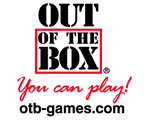Designing Games with the Publisher in Mind
By Max Osterhaus, Director of Product Development
Unless you are planning to self publish your games, at some point you are going to have to work with a publishing company and it’s in your best interest to make that interaction as smooth as possible. Coming from the publisher’s perspective, I am going to give you some hints about how keep the publisher happy and why you should care! I am going to avoid talking about actual game design methods and focus on some of the meta-concepts that will assist you in making the transition from hobby to profession.
Let’s start from the beginning. There are an infinite number of ways that you might go about designing your game, but if it is your goal to have your games published, it is important to keep your audience in mind. In this case your audience is twofold. First there are the players of your game and second there is your publisher. Whether you design a game with a particular publisher in mind or are trying to decide to which company you should submit, it is critical that you do your research before submitting. There are many game companies and each has different needs and procedures. To gauge what a publisher wants, it’s usually good to look at their current product line and what sorts of new things they are coming out with. If you have a three-hour economic simulation game, it’s unlikely that a company that specializes in family card games would be interested.
Now let’s say you have a great, well-tested game that seems to be perfect for a certain company--what’s next? First, make sure that the company accepts submissions and find out exactly what procedure they prefer you follow. Put some time into making your correspondences professional, and most important of all, find a way of describing your game quickly and clearly. It is critical to be able to get the idea of the fun or interest of your game across quickly and clearly. Then, if the publisher is interested, you should have well-written, simple rules available upon request. Prototypes do not need to be beautiful, but they do have work pretty much flawlessly. Graphics and other sorts of content might help to make sure the testers have fun, although they are not technically necessary. Keep everything tidy, in bags, boxes, or rubber bands as necessary.
If all of this sounds like a lot of kowtowing, that’s not the point. We, gatekeepers (the people who work with private designers) are not looking to be praised or flattered; we are looking for great games and we put a lot of time into this search. To that end, your presentation needs to be to-the-point and professional while still transferring what is so excellent about your game. If your game not accepted, do not waste your time trying to convince the gatekeeper, but do learn something about that company’s preferences.
These are the sorts of things that separate those who design for a hobby with the professionals and by mastering this process, you’ll save time, save money, and increase your odds of getting your games published!
For more information, I recommend Keith Meyers’s book “Paid to Play,” available on his website http://www.gamedesigncentral.com/.
Tuesday, September 29, 2009
Subscribe to:
Post Comments (Atom)

No comments:
Post a Comment